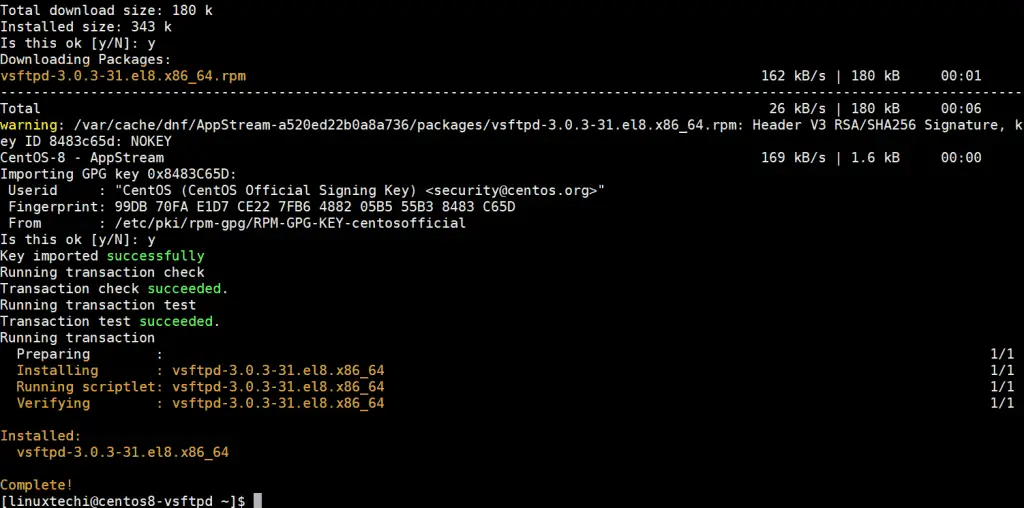



When you have finished, simply save and close the file in the usual way.
CENTOS 7 VSFTPD PASSWORD
Repeat this process as required for every user you need but, for obvious reasons, maintain a good password policy and do not use the same virtual-username more than once. Now add your usernames and corresponding passwords in the following way:.The first step is to login as root on our vsftpd server and create a plain text file called virtual-users.txt that maintains a list of usernames and passwords of the virtual users.This process needs the policycoreutils-python package installed. It is expected that your server will be using a static IP address and that vsftpd is already installed with a chroot jail and is currently running. To complete this process, you will require a working installation of the CentOS 7 operating system with root privileges and a console-based text editor of your choice. Since you are not using a local system account, it can be argued that this approach gives improved security. This type of configuration implies a certain degree of flexibility afforded by the use of virtual users. You may also want to consider implementing a solution that allows a particular individual to maintain more than one account in order to allow access to different locations on your server. During the lifetime of your server, there may be occasions when you wish to enable FTP authentication for a user that does not have a local system account.
CENTOS 7 VSFTPD HOW TO
In this process, you will learn how to implement virtual users in order to break away from the restriction of using local system user accounts.


 0 kommentar(er)
0 kommentar(er)
